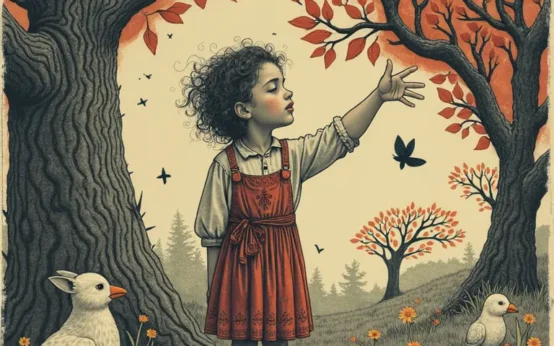For centuries, before the advent of sophisticated meteorological tools, people relied on observing the natural world to predict the weather. This observation led to a rich tapestry of weather proverbs – short, memorable sayings passed down through generations. Often dismissed as quaint folklore, a closer look reveals a surprisingly consistent logic underpinning many of these traditional forecasts, a logic that often aligns with modern atmospheric science. This article delves into the fascinating intersection of folklore and meteorology, exploring the scientific basis behind common weather proverbs and examining why they proved so effective for so long.
The Roots of Weather Lore
Weather lore isn’t simply random guessing. It’s the accumulated wisdom of countless observations made by people intimately connected to their environment – farmers, sailors, hunters, and others whose livelihoods depended on anticipating changes in the weather. These observations weren’t recorded in scientific journals; they were encoded in rhymes, proverbs, and stories, making them easier to remember and transmit orally. This process of cultural transmission naturally selected for proverbs that proved accurate, while less reliable ones faded into obscurity. The result is a surprisingly robust body of practical meteorological knowledge, albeit expressed in non-scientific terms.
Red Sky at Night, Shepherd’s Delight; Red Sky in Morning, Shepherd’s Warning
Perhaps the most famous weather proverb, this saying has a solid scientific basis. It relates to the scattering of sunlight. When the sun is setting (red sky at night), the light has to travel through more of the atmosphere. Shorter wavelengths of light – blue and violet – are scattered away, leaving the longer wavelengths – red and orange – to reach our eyes. A red sunset indicates that there’s a high-pressure system and dry air moving in from the west, meaning stable and settled weather is approaching. Conversely, a red sunrise (red sky in morning) means that the dry air has already passed, and a weather system with moisture is likely coming from the west. This often signals an approaching storm. The proverb’s accuracy is highest in mid-latitude regions where weather systems generally move from west to east.
Ring Around the Moon, Rain Soon
This proverb is linked to the formation of halos around the moon. Halos are caused by ice crystals in high cirrus clouds. These clouds often form ahead of an approaching warm front and an associated low-pressure system. As the warm front approaches, the atmospheric moisture increases, leading to a higher probability of precipitation. Therefore, seeing a ring around the moon is a good indicator that rain or snow is on its way, typically within 24 hours. The size and clarity of the halo can even provide clues about the intensity and timing of the approaching weather system.
When Dew is on the Grass, Rain Does Not Pass
This proverb relies on the principle of radiative cooling. Dew forms when the temperature drops overnight, and water vapor condenses on surfaces. A clear, calm night allows for significant radiative cooling, promoting dew formation. These clear, calm conditions are associated with high-pressure systems, which generally bring stable weather. If dew forms, it suggests the presence of a stable atmosphere, making rainfall less likely. However, the proverb isn’t foolproof. Local conditions can influence dew formation, and even stable systems can produce localized showers.
Smoke Gets Heavy, Rain is on the Way
This observation relates to atmospheric pressure. Low pressure, often associated with approaching storms, causes air to rise. This rising air reduces the air density, making it harder for smoke to rise and causing it to hang closer to the ground, appearing “heavy.” Higher pressure, conversely, allows smoke to disperse more easily. Therefore, observing heavy, sluggish smoke can be a reliable indicator of an approaching low-pressure system and potential rainfall. This proverb is particularly effective in areas where wood-burning is common.
Woolly Worms and Winter Weather
While seemingly whimsical, the belief that the width of a woolly worm’s (the larval stage of the Isabella tiger moth) bands predicts the severity of the upcoming winter has a basis in biological observation. The coloration of the woolly worm – the width of the brown bands versus the black bands – is influenced by the conditions the caterpillar experiences during its development. Specifically, the amount of time spent feeding and growing affects the coloration. A wider brown band is thought to indicate a mild winter, as the caterpillar had plenty of time to feed. A narrower brown band suggests a harsh winter, where the caterpillar faced challenging conditions and limited food availability. While not a precise predictor, studies have shown some correlation between woolly worm coloration and winter severity in certain regions.
Animals and Atmospheric Pressure Changes
Many proverbs involve animal behavior as a weather indicator. For instance, “Cows lying down mean rain is coming.” This isn’t simply anecdotal; animals are often more sensitive to changes in atmospheric pressure than humans. Cows, for example, may lie down to conserve energy before a storm, as the lower pressure can make it more difficult to breathe and move around. Similarly, birds flying low may indicate an approaching storm, as the lower air pressure affects their flight patterns. Bees retreating to their hives and ants building higher mounds are also observed behaviors linked to impending weather changes. These behaviors are not conscious predictions but rather physiological responses to subtle environmental shifts.
The Science of Clouds and Weather Prediction
Traditional weather lore often emphasizes cloud observation, and for good reason. Clouds are visible indicators of atmospheric processes. Proverbs like “Mackerel skies and mares’ tails make tall ships carry low sails” refer to specific cloud formations. Mackerel skies (cirrocumulus clouds) and mares’ tails (cirrus clouds) often precede approaching warm fronts and storms. These clouds form at high altitudes and are composed of ice crystals. Their appearance signifies increasing moisture in the upper atmosphere, a precursor to worsening weather. Understanding cloud types and their formation is a fundamental aspect of modern meteorology.

Limitations and Modern Meteorology
While surprisingly accurate, weather proverbs are not infallible. They are often localized – a proverb that works well in one region may not be reliable in another. They also lack the precision of modern forecasts. Proverbs provide general trends and probabilities, while modern meteorology utilizes complex models and data analysis to predict specific weather conditions with greater accuracy. Furthermore, climate change is altering weather patterns, potentially reducing the reliability of some traditional proverbs over time. However, the underlying principles remain valid.
The Value of Local Knowledge
Despite the advancements in meteorology, local weather knowledge remains valuable. People who live in a particular area often develop a nuanced understanding of local microclimates and weather patterns that may not be captured by large-scale models. This local knowledge, combined with modern forecasting tools, can provide the most accurate and reliable weather predictions. The study of folklore and weather proverbs can also offer insights into the historical relationship between humans and the environment.
The Interconnectedness of Observation and Prediction
The enduring appeal of weather proverbs lies in their simplicity and accessibility. They demonstrate that careful observation of the natural world can yield valuable information about the weather. They also highlight the importance of cultural transmission in preserving and refining this knowledge. While modern meteorology provides a more sophisticated understanding of atmospheric processes, the fundamental principle remains the same: understanding the weather requires careful observation and analysis. This principle extends beyond weather prediction; it’s a cornerstone of scientific inquiry in many fields. If you’re interested in other areas where consistent, traditional practices align with modern science, explore the science behind knot tying, a skill honed over centuries that is now understood through physics and engineering.
Beyond the Forecast: Weather Lore and Culture
Weather lore isn’t just about predicting the weather; it’s deeply embedded in culture and tradition. Many proverbs are associated with specific agricultural practices, festivals, and beliefs. They reflect a worldview where humans are intimately connected to the natural world and must adapt to its rhythms. Studying weather lore provides a window into the history of human-environment interactions and the cultural significance of weather phenomena. Consider also how deeply ingrained traditions influence other areas – like the meticulous crafting of perfumes, a field where vintage perfume formulation relied on consistent chemical principles long before modern analysis.
The Evolution of Tools and Techniques
The transition from relying solely on proverbs to utilizing sophisticated meteorological instruments was gradual. Early tools like the barometer, invented in the 17th century, allowed for more objective measurements of atmospheric pressure. The development of thermometers, hygrometers, and anemometers further expanded our ability to quantify weather conditions. However, even with these tools, observation and interpretation remained crucial. Just as a skilled sailor understands how to read the sea, a seasoned meteorologist knows how to interpret data and apply their knowledge to predict the weather. This parallels the evolution of other technologies, like vintage camera lenses, where understanding the underlying optics was crucial for achieving desired results, even before the advent of digital imaging.
The Power of Pattern Recognition
At its core, weather lore relies on pattern recognition. People noticed recurring relationships between observable phenomena and subsequent weather conditions. This ability to identify patterns is a fundamental cognitive skill that has been essential for human survival. Modern meteorology utilizes sophisticated statistical models to identify and analyze patterns in weather data, but the underlying principle is the same. This capacity for pattern recognition also extends to language itself, as explored in the etymology of brand names, where historical usage reveals consistent patterns in naming conventions.
Weather Proverbs as a Cultural Archive
Weather proverbs are more than just weather forecasts; they are a cultural archive, preserving knowledge, beliefs, and traditions. They offer a glimpse into the lives of past generations and their relationship with the natural world. By studying these proverbs, we can gain a deeper understanding of our cultural heritage and the enduring power of observation. This preservation of cultural knowledge is mirrored in the careful maintenance and evolution of games, as seen in the evolution of board game pieces, where designs reflect both practicality and cultural aesthetics.
Conclusion
The seemingly simple world of weather proverbs reveals a complex interplay of observation, cultural transmission, and scientific principles. While modern meteorology has surpassed the predictive capabilities of traditional lore, the underlying logic of many proverbs remains remarkably consistent with our understanding of atmospheric science. These proverbs serve as a reminder of the intimate connection between humans and the environment and the enduring value of local knowledge. They are a testament to the power of observation and the wisdom accumulated over generations.


 The Unexpectedly Detailed World of Antique Keys: Locks, Lore & Lost Stories
The Unexpectedly Detailed World of Antique Keys: Locks, Lore & Lost Stories  The Unexpected Origins of Nursery Rhymes: Tales of History & Hidden Meanings
The Unexpected Origins of Nursery Rhymes: Tales of History & Hidden Meanings  The Forgotten Science of Weather Lore: Predicting Skies with Proverbs & Signs
The Forgotten Science of Weather Lore: Predicting Skies with Proverbs & Signs  Decoding Animal Superstitions: Origins & Global Beliefs
Decoding Animal Superstitions: Origins & Global Beliefs